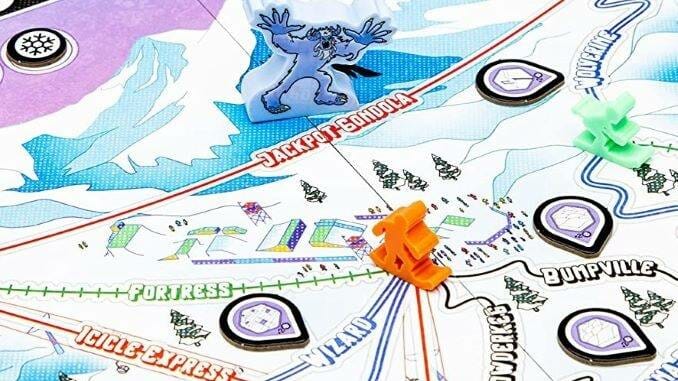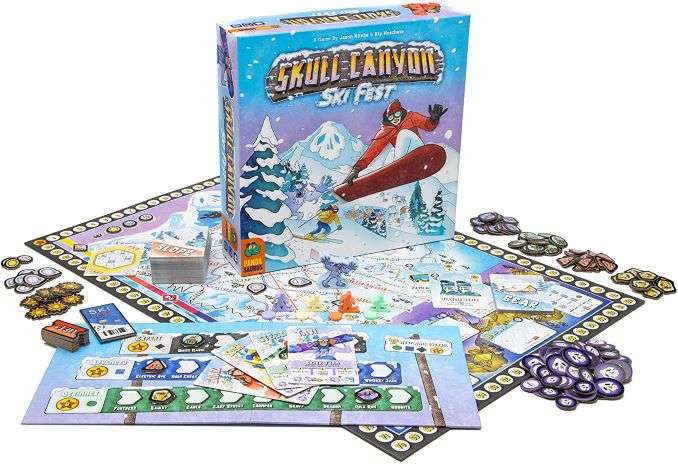Board Game Skull Canyon: Ski Fest Gives You a Ticket to Ride the Slopes

Lots of games try to be Ticket to Ride Plus—to take that classic game’s simple, elegant concept and spin it out into a bigger or longer or meatier game. Skull Canyon: Ski Fest does a better job than most at this, while offering enough twists to become a different game at heart—one with a little more complexity, some of which works and some of which doesn’t, but that still scratches that same core itch that Ticket to Ride and its many descendants do. Also, there’s a Yeti.
Skull Canyon: Ski Fest has two core parts to its gameplay. In the day phases players try to complete routes down the mountain, going down trails of different difficulty levels, gaining points and some bonuses by doing so. You make your way down a trail through set collection with your cards, similar to the mechanic in Ticket to Ride, and then score points based on how long the route was. If you happen to finish the day at the bottom of the mountain, you get a bonus. In between days, the Night phase covers “apres-ski” activities, where you buy gear cards that give you additional powers during the day, or gain trail cards or fame tokens. After three Days and two Nights, the game ends, with a whole slew of game-end bonuses available based on how many trails of each type you finished relative to your competitors.
The board has two different sides based on player count, one for two-player games and one for three- or four-player games. At the start of each game, you’ll set the weather for Day 1 to sunny, and then choose two random markers (sunny, icy, or snowy) for Days 2 and 3. 10 of the trails get Style bonus markers which players can claim when they complete those trails. They then each start with a hand of seven Slope cards, the type players must collect in sets to be able to fill in trails on the board. The Yeti starts in the cave, but only because he has a toothache. He’ll be along shortly.
During the Day phases, players can collect Slope cards, ride a lift up the mountain, or play a set of Slope cards to ski a run. The Slope card collection mechanic is almost exactly like that of Ticket to Ride, except you can match the run’s color or style to move your skier down the trail, so it’s easier to complete a set—you avoid the Ticket to Ride issue where you’re drawing cards for twenty-seven consecutive turns to try to draw one more blue. There are yeti cards, which function as wilds, like Ticket to Ride’s locomotives. You also get two actions per turn in the Day phase, so you can use one action to take two Slope cards, and then a second to play a set from your hand. When you ski a run, you get victory points and fame points based on its difficulty. You also get to claim that run on the scoreboard: If no one has skied it so far, you claim it automatically, but if someone skied it already, you have to claim it with a set one card larger than the last person to do so before you can claim it. These matter for end-game scoring, so playing the extra card is usually the right move.
